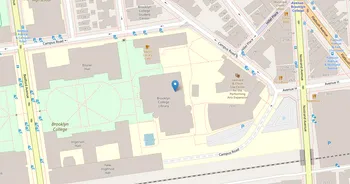Culinary Institute of America (CIA) : Overview, Courses, Scholarships & Rankings
About Culinary Institute of America
Set above the Hudson River, kitchens hum from early morning as students rotate through technique-driven classes, tastings, and real service practice. The school is known for disciplined, hands-on learning that pairs craft with food systems awareness and leadership. Facilities include professional teaching kitchens, bakeshops, student-run restaurants open to the public, a solid library, plus tutoring, career advising, and wellness support.
Campus life mixes chef whites with creative energy: clubs host pop-ups, chef demos, and tastings, with the occasional late-night recipe test. Hyde Park and the Hudson Valley bring farms, markets, and trails close by, with New York City within reach for inspiration and networking. Culture here is collaborative and rigorous, with recruiter visits, alumni mentorship, and industry externships guiding next steps. Notable alumni include Anthony Bourdain, Grant Achatz, and Cat Cora.
Key Institutional Details
Contact & Profile
Academic & Institutional
Academic Programs & Fields of Study
Culinary Institute of America (CIA) offers 7 degree programs across 3 major academic fields, graduating approximately 1,071 students annually. The most popular fields by graduate volume are Personal Services (4 programs, 756 graduates), Business (2 programs, 272 graduates) and Interdisciplinary (1 programs, 43 graduates). Explore program details, award levels, and graduate demographics below.
Personal Services (4 programs, 756 graduates)
Hospitality Management, Culinary Arts and Personal Care
| Program Name | Graduates | Gender Distribution | Award Levels | CIP Code |
|---|---|---|---|---|
| Culinary Arts and Chef Training | 444 |
|
Associate's
Bachelor's
|
12.0503 |
| Baking and Pastry Arts | 228 |
|
Associate's
Bachelor's
|
12.0501 |
| Culinary Science | 50 |
|
Bachelor's
|
12.0509 |
| Culinary Arts | 34 |
|
Certificate (1-2 yrs)
Bachelor's
|
12.0599 |
Business (2 programs, 272 graduates)
Business Administration, Marketing and Entrepreneurship
| Program Name | Graduates | Gender Distribution | Award Levels | CIP Code |
|---|---|---|---|---|
| Restaurant and Food Services Management | 259 |
|
Bachelor's
Master's
|
52.0905 |
| Hospitality Management | 13 |
|
Bachelor's
|
52.0999 |
Interdisciplinary (1 programs, 43 graduates)
Cross-Disciplinary Studies and Integrated Research Programs
| Program Name | Graduates | Gender Distribution | Award Levels | CIP Code |
|---|---|---|---|---|
| Multi- and Interdisciplinary Studies | 43 |
|
Bachelor's
|
30.9999 |
Admission Requirements & Test Scores
Comprehensive overview of admission criteria, standardized test score ranges, and application requirements for prospective students at Culinary Institute of America (CIA).
Application Requirements
Data based on IPEDS for 2022-2023 academic year. Test score ranges represent the middle 50% of admitted students (25th-75th percentile). Requirements may vary by program.
Tuition, Fees & Estimated Costs
Overview of tuition rates, housing, and other annual education expenses for undergraduate and graduate students
Financial Aid & Student Support
Summary of scholarships, grants, student loans, and financial aid statistics for undergraduate students
Student Success Metrics
Graduation rates and post-graduation earnings to help assess student outcomes and long-term value of education.
Loan Burden & Repayment Outcomes
Breakdown of loan repayment rates and student debt levels by income and dependency status.
Frequently Asked Questions
Find answers to the most common questions about Culinary Institute of America (CIA)
How much does it cost to attend Culinary Institute of America (CIA)?
The annual tuition at Culinary Institute of America (CIA) is $37,240 for in-state students. When including room and board, books, and other expenses, the total estimated cost is approximately $57,960 for in-state students. Additional costs include room and board $13,680 and books and supplies $1,000.
Data based on IPEDS program completions for 2022-2023 academic year. Tuition and cost estimates are approximate and may not include all fees, personal expenses, or transportation costs.
What academic programs and degree levels does Culinary Institute of America offer?
Culinary Institute of America (CIA) offers 7 academic programs across 3 major fields of study, with available degree levels: Certificate (1-2 yrs), Associate's, Bachelor's, Master's.
Most popular program areas include:
- Hospitality Management, Culinary Arts and Personal Care (4 programs)
- Business Administration, Marketing and Entrepreneurship (2 programs)
- Cross-Disciplinary Studies and Integrated Research Programs (1 programs)
Data based on IPEDS program completions for 2023-2024 academic year. Numbers reflect programs where students graduated, not all offered programs.
What is the acceptance rate for Culinary Institute of America?
Culinary Institute of America (CIA) has an 91.8% acceptance rate and a 34.3% yield rate, making it moderately selective.
Admission statistics breakdown:
- Total applicants: 2,161
- Students admitted: 1,983
- Students enrolled: 680
Data based on IPEDS for 2022-2023 academic year. Admission statistics may vary by program and application cycle.
What financial aid and scholarships are available at Culinary Institute of America?
Culinary Institute of America (CIA) provides financial aid to 22% of first-time, full-time students, with average grants of $18,211 and average loans of $16,177.
Average financial aid amounts by type:
- Pell grants: $6,309
- State/Local grants: $5,089
- Institutional grants: $15,853
- Federal loans: $6,398
The university supports 659 students with grants and 398 students with loans annually.
Data based on IPEDS for 2022-2023 academic year. Financial aid amounts and percentages may vary by program, enrollment status, and individual circumstances.
What is the average salary for Culinary Institute of America graduates?
Culinary Institute of America (CIA) graduates earn a median salary of $37,846 after 6 years and $47,475 after 10 years.
The salary range 10 years after graduation spans from $27,262 (25th percentile) to $71,624 (75th percentile), with top earners reaching $76,200 (90th percentile).
Data based on IPEDS for 2022-2023 academic year. Salary data reflects graduates who received federal financial aid (approximately 60% of all graduates). Actual earnings may vary significantly based on program, location, and individual circumstances.
Related Universities




Found something useful? Help others discover it too! Share with friends, on social media, or save for later - every share helps someone find the information they need.